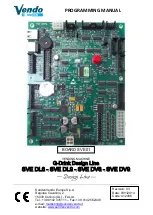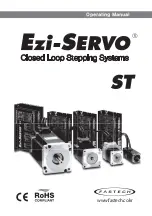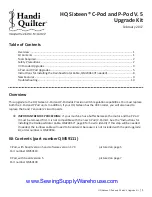
62
9-1-2022
APQS.com
Machine Operation
Step 1: Set a Preliminary “Full Bobbin Level” for a Bobbin Style or Thread Type.
Note: Each bobbin type and thread type that you use will require a different “full level” setting on the low
bobbin indicator gauge. For example, a pre-wound bobbin with 60-weight thread will have more yardage on
it than a self-wound bobbin with 40-weight cotton thread. Once you determine a single “full level” for a given
type of bobbin/thread combination, you can assume that any future bobbins you use with the same
combination will have a similar approximate “full level setting.” You will NOT need to repeat Steps 1-4 in this
process unless you switch to a different type of bobbin or a different thread in the bobbin.
For example, if you complete Step 1 and determine the “full bobbin level” for a cardboard pre-wound bobbin,
all bobbins of that type will use a similar setting.
Complete preliminary tension adjustments on the machine first, since thread tension will affect the sensor’s
accuracy.
Use a bobbin that contains the thread type you wish to use and do some practice sewing on a sample piece,
adjusting your tension on the top and bottom until you are satisfied with the stitches.
Insert a full bobbin containing that thread type into the machine.
Turn the “Bobbin Level Adjust” knob fully
clockwise
until the Bobbin Level Gauge reaches all the way up to
the “Full” (F) mark on the LCD screen. (Note: “M” bobbin machines have a different color Bobbin Level
Gauge on the screen.)
















































